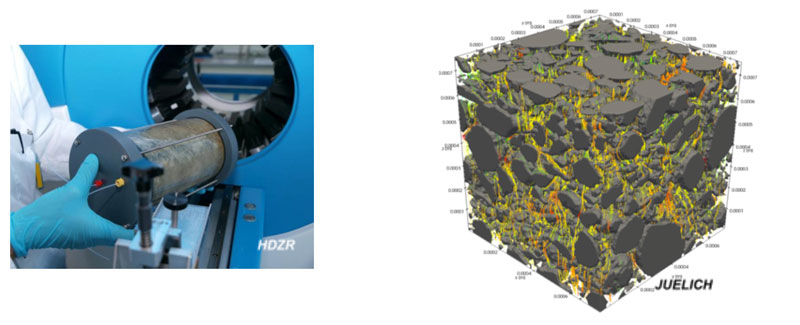The collaborative project Cement-based materials, properties, evolution, barrier functions (CEBAMA) is an innovation action granted by the European Commission (EC), within the HORIZON2020 programme, contributing to the development of options for the safe management of radioactive waste. The project specially supports the implementation-oriented research for of the first-of-the-kind geological repositories, in line with the Implementing Geological Disposal – Technology Platform (IGD-TP) (https://igdtp.eu/) vision of having the first geological disposal facilities operating safely in Europe by 2025. The 4-year project started the 1st of June 2015 and lasted until 31st May 2019. It was carried out by a consortium of 27 partners consisting of large Research Institutions, Universities, one Technical and Scientific Support organization (TSO), and one small-medium enterprise (SME) from 9 EURATOM Signatory States, Switzerland and Japan. IGD-TP and National Waste Management Organizations supported CEBAMA, for instance by co-developing the work plan, participating in the End-User Group, granting co-funding to some beneficiaries, and providing for knowledge and information transfer.
In view of the implementation and safe future operation of nuclear waste repositories, remaining key technical and scientific topics of common interest are addressed. One of these issues is related to the better understanding of cement-based materials properties which are key components in the multi-barrier system of a nuclear waste repository. For example, cementitious materials are used to encapsulate the nuclear waste, and are foreseen as liners and structural components as well as sealing materials. For this reason, the materials and their behaviour has to be addressed in the Safety Case for each repository.
The overall strategic objective of CEBAMA was to support the implementation of geological disposal by significantly improving the knowledge base for the Safety Case for European repository concepts. The ambition of this project was the development of a comprehensive model for predicting the transport characteristics such as porosity, permeability and diffusion parameters of cement-based materials in contact with the engineered and natural barriers of repositories in crystalline and argillaceous host rocks. Dedicated studies on radionuclide retention processes and on the impact of chemical alterations on these processes were part of this advanced approach.
R&D in CEBAMA was largely independent of specific disposal concepts and addressed different types of host rocks, as well as bentonite. CEBAMA did not focus on one specific cementitious material but studied a variety of representative cement-based materials for Nuclear Waste Storage in order to provide insight on general processes and phenomena which can then be transferred to different applications and national and international projects.
Specific objectives and research activities of CEBAMA are summarized as follows:
- Experimental studies analysing interface processes between cement-based materials and host rocks (crystalline rock, Boom Clay, Opalinus Clay (OPA), Callovo-Oxfordian (COX), Toarcian mudstone, Borrowdale Volcanic Group) or bentonite backfill, and assessing the impact on physical properties.
- Investigation of radionuclide retention and migration processes in high pH concrete environments, focusing on radionuclides which have high priority from the scientific and applied perspective.
- Improved validity of numerical models to predict changes in transport processes as a result of chemical degradation, including advanced data interpretation and process modelling.

More information of the project, including key deliverables and a list of publications is available at the project website (www.cebama.eu).

